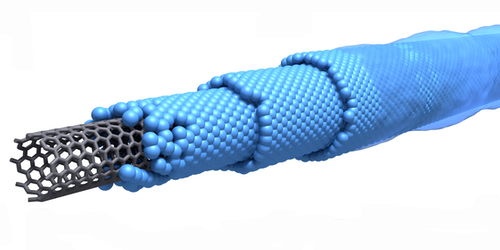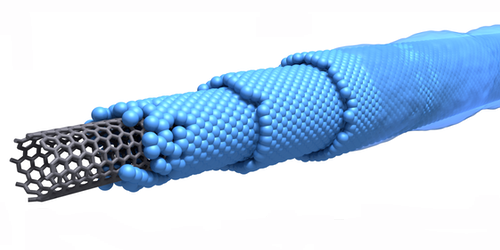Discontinuous Jumps for Superfluid Helium Growth
Helium is a go-to material for studying two- and three-dimensional phase transitions. Now Adrian Bachtold of the Institute of Photonic Sciences in Spain and colleagues have probed the behavior of this material as it grows on carbon nanotubes—structures that sit somewhere between the 1D and 2D worlds. Forming helium films up to five atoms thick, they discovered that each layer of atoms completes its growth before the next one starts. The team says that their setup could be used to grow helium films of precise thicknesses. These films might then be used to study how the material transitions from normal fluid to superfluid when rolled up into a tube, potentially uncovering a new topological phase transition.
The team started out with a chamber containing a carbon nanotube suspended between two posts. Short-range van der Waals forces held the ends of the tube in place while the suspended middle was free to move, creating a system that could vibrate like a guitar string. The team then added helium vapor to the chamber, which condensed on the tube, forming a film. To monitor the film’s growth, the team tracked changes in both the resonant frequency of the tube’s vibrations and the speed of sound through the film.
Their measurements revealed discontinuous jumps in the system’s resonant frequency, which decreased as the film grew and added mass to the tube. Similar jumps were observed in the detected speed of sound. The team says that these jumps indicate that the superfluid film grows in a discontinuous layer-by-layer fashion—a previously unknown phenomenon.
This research is published in Physical Review Letters.
–Katherine Wright
Katherine Wright is a Senior Editor of Physics.





